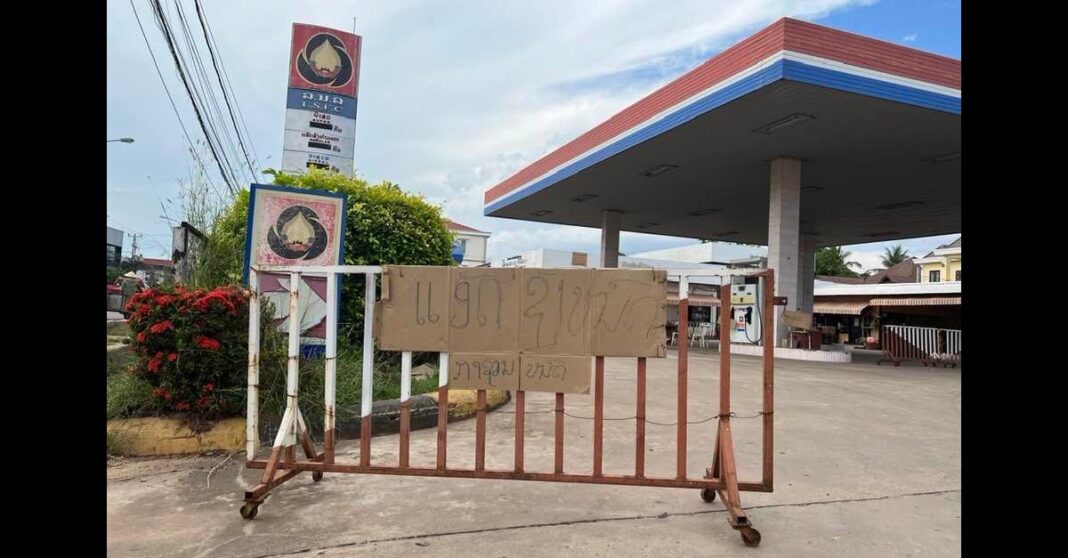Despite continued fuel shortages that have been described as a crisis for Laos, little guidance has been provided to the public as gaps in supply become endemic.
In the weeks leading up to and during the height of the fuel shortages, the government held meeting after meeting to attempt to address the situation. Both the cabinet and the National Assembly held special brainstorming meetings with the private sector, while the cabinet vowed to tackle economic woes.
Solutions were discussed publicly, including tax cuts and imports from cheaper suppliers as far afield as Russia.
The Central Bank ordered crackdowns on illegal currency exchange operations and asked members of society to reduce imports of luxury or unnecessary items.
But the initial flurry of meetings and decisions was eclipsed by a wave of public astonishment posted to social media, with videos of chaos at the pumps taking center stage.
Now, the ludicrously long lines at petrol pumps have mostly disappeared. Panic is over, with resignation quickly setting in. Motorists routinely drive around in search of a petrol station stocked with fuel. And rules have been slowly instituted; fuel is now rationed out and the filling of containers has been banned.
But many have begun to ask – what now?
Any recent deliberations by leaders have remained behind closed doors, while public relations have been handled by fuel executives, such as Chairman of the Board of Directors of PetroTrade, Chanthone Sitthixay, who famously told the public not to panic.
“We are not in a state of crisis, just going through a difficult patch because we cannot get more foreign currency. The situation will improve if everyone shares what is available and does not hoard petrol in the hope of making a profit,” Chanthone was quoted as saying by Vientiane Times.
“We believe that foreign currencies are being privately stockpiled because sentiment is driving people to act irrationally,” he said.
Just two weeks later, however, a top executive at the Khammouane Branch of the Lao State Fuel Enterprise called on the public to conserve fuel as much as possible, telling people not to travel because of concerns for the agricultural sector.
“If people are wasteful with fuels during this crisis it will cause problems for all of us in the future,” said Mr. Vongsone Phimmavongsa, Head of the Khammouane Branch of Lao State Fuel Enterprise, referring to potential food shortages.
And the Lao Farmers Network recently pleaded for assistance, worrying agricultural producers will not be able to access enough fuel to plow their fields or water their crops, while steadily rising petrol prices are visibly affecting the poor.
In a sign that shortages could continue for some time, the Vientiane Capital Department of Industry and Commerce has begun posting daily lists of petrol stations that are open for service.
And while the fuel crisis has been reframed as only a shortage, the population isn’t so sure.
“Our city is designed for cars and bikes. We don’t have a lot of options for public transport and we rely heavily on our vehicles,” one Vientiane resident told the Laotian Times.
“We haven’t been told when things will go back to normal and we don’t know how long we’ll have to live like this,” she said.
And so crisis or not, if a solution has been found or is still being sought, or even if there is no way out at all, the reality of the situation should be promptly and clearly communicated to the people.
—
Written with assistance from Cameron Darke.



